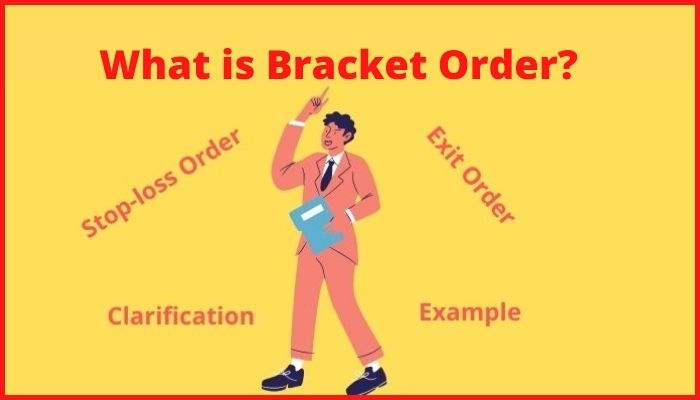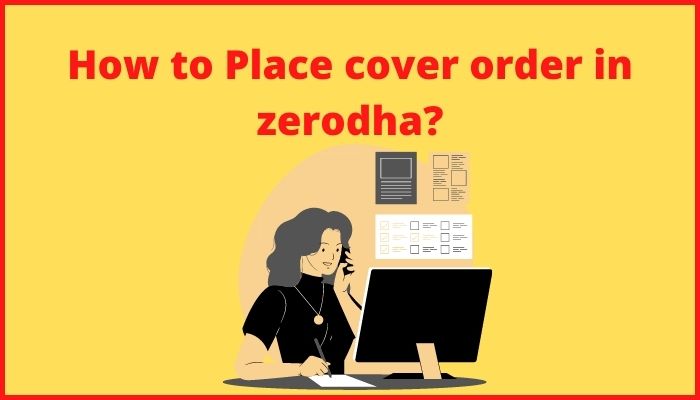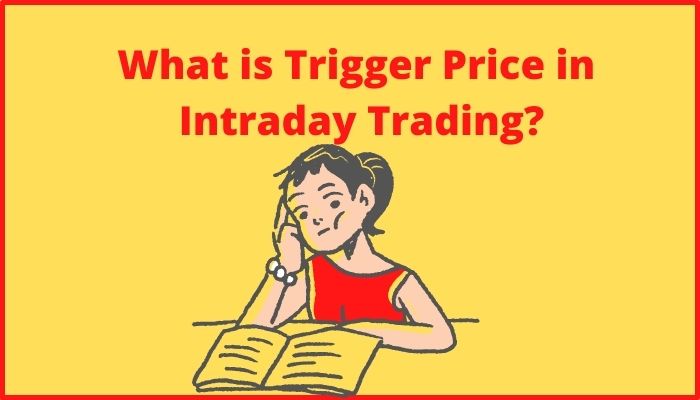When People start intraday trading mostly people remain confused with different type of orders. Many Investor won’t be able to understand the difference between cover order and bracket order. This article will clear your confusion between bracket order and cover order with example.
Table of Contents
Introduction of Bracket Order and Cover Order
Bracket orders and cover orders are 2 kinds of intraday orders that are commonly used. These instructions are usually combined with a stop-loss order and/or a trigger order, depending on the situation.
Let’s understand what is cover order and bracket order before discussing Difference Between Cover Order and Bracket Order.
Bracket Order

A bracket order is one that combines three different kinds of orders. Primary order + stop-loss + target = bracket order.
They’re made to make it easier for traders to put three orders in one go. As the title shows such orders help to ‘bracket’ an order by evaluating the trade’s stop-loss points as well as the trade’s desired exits.
It’s a quite complicated intraday trading order. A investor starts a new trade with a stop-loss and an target order.
Explanation
The following rule is used to create a bracket order: Initial order + stop-loss order + exit order = bracket order.
The primary order, also known as the initial order, is placed by a trader. This is when an investor opens a new position by putting a buy or sell order for a specific trading period. As early as the platform executes the initial order in bracket order, the platform will position the remaining 2 orders immediately.
Stop-loss Order
Whether a trader wishes to sell or buy a share after it hits a certain level, he or she places a stop-loss order. In a stop-loss order, for instance, the trader may define a lower limit value below which he or she can no longer keep the shares.
When the share price hits that value, the software immediately issues a sale order. You can also put a stop-loss order at Rs 205 if you sold a shares at Rs 200. A purchase market order will be issued to the exchange when the stock value crosses Rs 205.
Exit Order
A exit order is the exact opposite of a stop loss. A trader sets a maximum profit value above which the software must purchase or sell the shares until it hits that cost with a target order. This is a difference between cover order and bracket order, as cover order does not have this function.
Stop-loss and target orders are generally exclusive, as we can see from the three forms of orders described above. They can’t happen at the same time, because if one is fulfilled, the other will be immediately cancelled.
Example
Let’s assume trader X places a request for 20 stocks at the current online market value of Inr 220 on exchange.
X positions a Rs 200 stop-loss order and a Rs 250 goal order. The stop-loss order will be executed and the goal order will be immediately cancelled if the stock price falls below Rs 200 per share. If the share value increases to Rs 250 per share, the contrary would emerge.
There is a third possibility. These three orders will be withdrawn if the trader has set a limit order at Rs 220 and the share price does not touch Rs 220.
Importance
As a result of the basic order’s fulfillment, the trader’s entry order into the market is important. Both the stop loss and target orders will be terminated for the day if that does not happen. Nevertheless, this is indeed true for limit orders. The first order in a market order would only be delivered at the actual market price.
Advantage
A bracket order is a type of order that allows traders to limit their failures and reduce their level of risk. It also greatly aids traders in automating their trades. Since all bracket order places are squared off by the end of each trading day, they are mainly useful for intraday trading.
If these instructions remain unfulfilled, the machine would eventually square them off.
Cover Order

A cover order is one in which the primary order is accompanied by a mandatory stop-loss order. A investor puts a buy/sell order, which may be a limit or market order in a cover order. The mandatory stop-loss order is set in a frequency band and cannot be changed.
As previously discussed, using a stop-loss order will assist reduce damage. Both cover orders are squared off throughout the current trading day and are not carried forward to the next day.
Clarification
Exit order is not present in cover order, which is a difference between cover order and bracket order. Primary order + stop-loss order = cover order
For intraday trading, it’s a valuable option.
Example
Let’s look at an instance of a market order to better explain cover orders.
X wishes to purchase 20 stocks of a firm presently exchanging at Rs 200 per stock. In a cover order, X can also put a stop-loss order at the same time. Let’s say X sets a stop-loss order at Rs 190, where as he intends to sell the shares.
When the share price hits the target amount, the selling order will be issued immediately after the primary order has been conducted.
If the stop-loss order isn’t filled, the software will immediately square off the whole order before the cut-off period.
Difference Between Cover Order and Bracket Order
Here are the major difftrence to understand cover order vs bracket order :
| Specifications | Bracket Order | Cover Order |
| Definition | Since 2 orders are combined with the original order, this is a three-in-one order. | This is a two-legged order since the original order can just be combined with stop-loss order. |
| Inclusions | Bracket order is includes Initial, stop-loss and exit order. | Cover order includes Initial & stop-loss order |
| Exits | Only when both the stop loss and goal order are unhelpful will the machine immediately square off the order in platform order. | In a cover order, it depends only on the stop-loss order. |
Conclusion
Understanding these order types necessitates a significantly greater master’s of stock expertise and analysis on the side of traders. Traders that use bracket orders and cover orders will help to reduce losses.
This is all from our side regarding difference between cover order and bracket order. Hope we are able to explain difference between cover order and bracket order, Let us know your views about bracket order vs cover order in the comment section.
Other Interesting blogs related to Difference between cover order and bracket order.
How to Activate F&O in Zerodha?
How to Pledge Shares in Zerodha?
What is Convert Position in Zerodha?
FAQ About cover order vs bracket order
which is better cover order or bracket order?
With more options and reward possibilities Bracket Order is Better than cover order.
What is trailing stop loss zerodha?
It's a setting that allows you to set a specific loss amount or percentage on a trade.
what is cover order in intraday?
Cover Order is the one in which Initial order comes with mandatory stop loss.
Cover order charges in Zerodha?
The Charges are Rs. 20 or 0.03% (whichever is less) Per order.
drawback of bracket order?
The executed exit price would be market value. It is not possible to revoke a bracket order once it has been placed.


